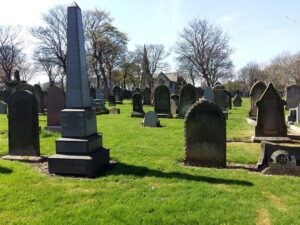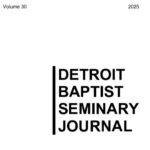Old Age, Death, or Something Else? The Meaning of Ecclesiastes 12:1–7
One of the many interpretive challenges in Ecclesiastes revolves around the meaning of the closing poem in 12:1–7. Interpreters have often read the poem as an allegory of old age. There are a number of problems with this view, however, including inconsistency in the meaning of the symbols and a tendency to impose the reader’s interpretive grid upon the images. Throughout history, there have been no fewer than twelve suggestions as to its meaning:
(1) The afterlife (Sheol) or postmortem judgment of sinners is portrayed through a series of metaphors for the eternal state (Jerome, Ogden). This reading links the “evil days” to the period after death; however, this period is more likely a time when the living (near death) can reflect on the nature of their life.
(2) Death is depicted through the gloom and sadness of a household following the death of the owner of the estate (Schoors, Holmstedt-Cook-Marshall). This view typically sees vv. 2–5 describing his death along with the ensuing funeral.
(3) Death is portrayed through the decay and dilapidation of a house (Witzenrath). This view argues that the movement from positive to negative features exhibits the downfall of the house itself: from strong to weak, active to idle, bright to dark, and open to closed.
(4) Death is described with cosmic or apocalyptic imagery consistent with the end of the world (Seow, Enns, Provan, Bartholomew). This view accounts well for the stark imagery: the darkening of celestial lights is a frequent sign in the prophets of the eschatological day of Yahweh (Isa 13:10; Joel 2:31; Amos 5:20; 8:9; Zech 14:6–7), and other images, such as the depopulation of mill workers and trembling of house guards, can be linked to eschatological texts (Matt 24:28, 40–41; Luke 17:34–35; Rev 6:15–17).
(5) Death is portrayed through a series of disparate images taken from nature, the home, business, and the person (Brown). This view sees the series as picturing consecutive demises: (a) cosmos (v. 2); (b) domicile (v. 3); (c) commerce (v. 4a); (d) the natural realm (vv. 4b–5a); and (e) the individual (vv. 5b–7).
(6) Imminent death is depicted as a gathering storm (Ginsburg, Fredericks). It’s not clear that this view adequately accounts for all the images.
(7) Imminent death is portrayed through scenes from the evening nightfall (Michaelis). As the previous one, this reading accounts for some aspects but falls short of the vividness of the imagery.
(8) The loss of joy and purpose, often associated with old age but not necessarily, is exhibited through the imagery of a storm (Knoebel, Stuart, Eaton, Weeks). This view likewise does not go far enough, as the sun and moon going dark suggests a finality in the context that is more than simply the loss of happiness.
(9) The failure of human effort in general is pictured through the imagery of a collapsing house (Sawyer). This view takes the images as moving from the doomed household to unrelenting nature to underscore the futility of human exertion in a fallen world. Yet more than mere frustration at human futility seems in view.
(10) Old age is depicted by the features of the rainy winter season in the Levant (Levy, Zöckler, Podechard, Wright). A variation sees this as a particular period of the winter season, the so-called seven days of death which mark the conclusion of winter and herald the arrival of spring, allegedly a time when the elderly were susceptible to death A significant issue with this view and the following ones is their resort to a largely allegorical reading of the text.
(11) Old age is portrayed through a variety of images, primarily seen as a coming storm in v. 2 and the demise of a house/estate in vv. 3–5 (McNiele, Barton, Longman). Many of these interpreters read vv. 3–5 as an allegory for parts of the body (e.g., Barton, Longman).
(12) Old age is depicted through metaphorical/allegorical references to the human body (Ibn Gayyat, Delitzsch, Haupt). In this reading, often the house wardens represent the elderly’s arms; the valiant men, the knees; the grinders, the teeth; the daughters of song, the sense of hearing; and so on.
The problem with these latter readings, clever as they may be, is that they indulge in a form of reader-response hermeneutics, whereby a non-falsifiable meaning is imposed on the text. Such an approach is subjective, aligning with the whims of the interpreter, and cannot be proved or disproved. As a medium of teaching, the allegory seldom appears in biblical wisdom, which is concerned with practical applications rather than esoteric meanings. If Qohelet intends us to decode the features of an allegory, he has not left us the key. Moreover, an allegory runs contrary to the train of the book to this point. My preference is to read the poem as a series of metaphors for death—together with its individual, communal, and cosmic implications—drawn from the created order, domestic life, commerce, and warfare. This view combines elements from views 3–5 above by seeing a pastiche of images emphasizing that the death of an individual is analogous to the death of a world.
A close literary reading of the poem supports this conclusion:

In this view, the structure exhibits interlocking prose and poetry frames. Verses 1 and 7 frame the unit with prose: both verses focus on God as the giver of life, sandwiching the poem proper in vv. 2–6. The poem alternates between the framed “before” (vv. 2, 6) and the inner refrain “on the day when” (vv. 3–5). The frame (vv. 2, 6) pictures death or, more specifically, the act of dying so that the “before” refers to the time period after which one can no longer remember the Creator (i.e., before a person dies). The inner refrain (vv. 3–5) is a subset of vv. 2 and 6. It pictures the day of death through a series of images or snapshots of its communal and cosmic consequences. Verse 3’s opening phrase “on the day when” signals that the various images occur concurrently, including the lines of v. 5e–f, which mark the man’s death. Elsewhere in the book the singular form of “day” (yôm) often describes a unique day, such as the day of one’s birth (7:1) or the day of one’s death (7:1; 8:8).
The ultimate meaning is that the reader, ostensibly the young man addressed in 11:9, is to bear in mind his Creator while there is time. This does not mean merely to think often of death but to live sober-mindedly: each person is accountable to God as the originator and sustainer of life as well as the judge at the end of life. The poem reminds us that time passes quickly. We must put our God-given energies, gifts, and talents to good use to glorify him. Someday soon we will be face to face with God. Are we ready for that day?




Kyle,
Thank you for bringing helpful clarity to this text.